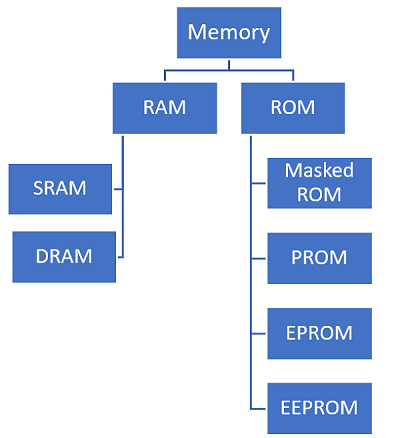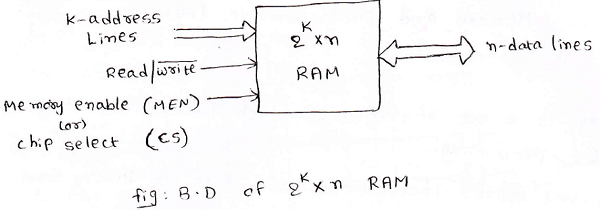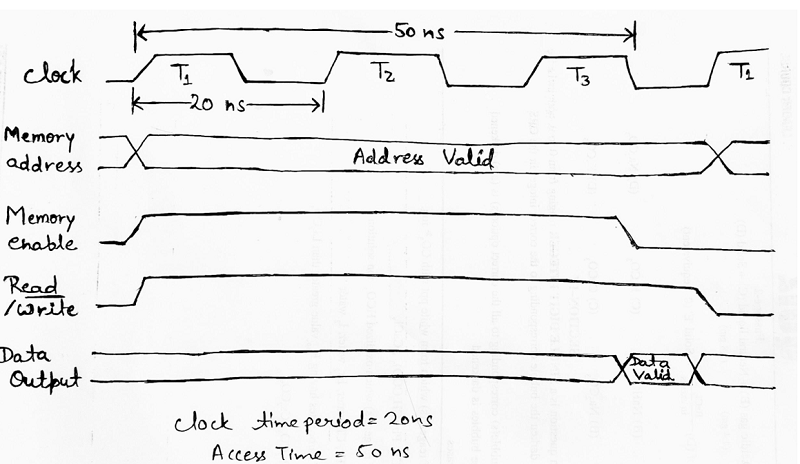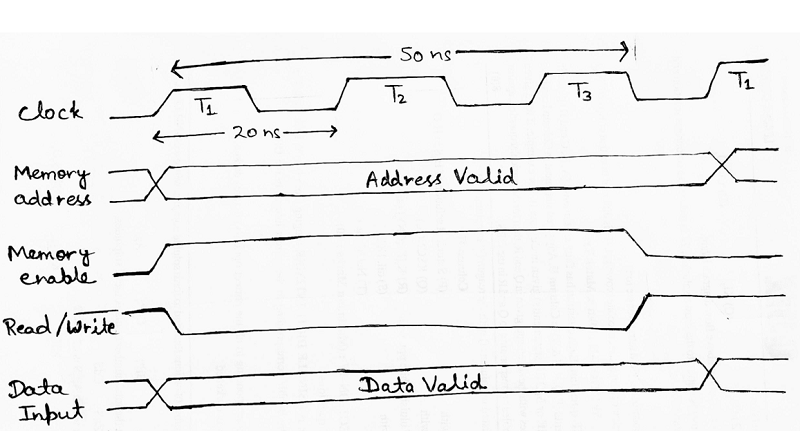Home »
Digital Electronics
Concept of Random Access Memory (RAM) in Digital Electronics
Random Access Memory (RAM): In this tutorial, we will learn about the Random Access Memory (RAM), the different types of RAMs.
By Saurabh Gupta Last updated : May 11, 2023
Memory is a set of registers that holds instructions and data for processing. Data inside these memory units are stored in the form of binary data. There are mainly two kinds of memory that are used in Digital Systems which are named RAM (Random Access Memory) and ROM (Read Only Memory).
The memory inside Digital Systems can be classified as:

Random Access Memory (RAM)
RAM is called "Random Access Memory" because through it any storage location can be accessed directly. RAM belongs to the class of volatile memory which means if the power supplied to the system goes OFF, then data stored inside the RAM will get lost, that is why RAM is generally used to store only temporary data. Hence, RAM is also known as data memory.
- Memory Write operation can be defined as the process of storing new information into memory.
- Memory Read operation can be defined as the process of transferring the stored information out of memory.
- A RAM is capable of performing both Read and Write operations that is why it is also called Read/Write
Block Diagram of RAM
The block diagram of a RAM can be drawn as:

In the above figure, the size of RAM is 2K * N, it means RAM consists of 2K memory locations and each memory location has a size of n-bits.
The communication between memory and other devices can be achieved through data lines. Each data line carries one bit of binary information. Data lines are bidirectional in nature, but at any time they act as either input or output lines. During memory write operation data lines act as input lines.
An address line carries the desired memory location address for memory read or writes operation.
Read / Write is a control signal. It is used to select either Read or Write operation. If Read / Write =0, then RAM performs write operation. RAM enables or performs either read or write operation only when its Chip Select (CS) or Memory Enable (MEN) input is high. If CS=0, then RAM is disabled.
Types of Random Access Memory (RAM)
There are two types of Random Access Memory (RAM). They are:
- Static Random-Access Memory (SRAM): SRAM consists of flip-flops to store binary information.
- Dynamic Random-Access Memory (DRAM): DRAM consists of CMOS transistors and capacitors. It stored the binary information in the form of electric charges on capacitors.
Memory Read Operation
The memory read operation steps are:
Step 1: Apply the binary address of the desired word to the address lines.
Step 2: Activate the read input.
The memory unit then takes the bits from the word that already has been selected by the address and all of them are then applied to the output data lines. Hence, the content of the selected word doesn't change after the reading process is completed.
Memory read cycle timing diagram can be drawn as:

Access Time: It is the memory device operating speed. It is defined as the time required to perform the read (or) write operation.
Memory Write Operation
The memory write operation steps are:
Step 1: Apply the binary address of the desired word to the address lines.
Step 2: Apply the data bits that must be stored in memory to the data input lines.
Step 3: Activate the write input.
The memory unit then takes the bits from the input data lines and stores them in the words which are specified by the address lines.
Memory write cycle timing diagram can be drawn as:
